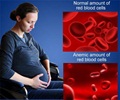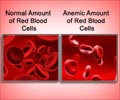- In 2021, anemia affected nearly 2 billion people worldwide, with women and children being most impacted due to factors like dietary iron deficiency, gynecological issues, and maternal hemorrhage
- Significant regional disparities exist in anemia prevalence, with Sub-Saharan Africa and South Asia bearing the highest-burden
- A comprehensive and culturally aware approach, including improved nutrition and treatment of underlying causes, is essential in reducing the global anemia burden
Global, regional, and national prevalence and mortality burden of sickle cell disease, 2000–2021: a systematic analysis from the Global Burden of Disease Study 2021
Go to source). Globally, 31.2% of women had anemia in 2021, compared to 17.5% of men. During the reproductive years, ages 15-49, the gender gap was more pronounced. The prevalence of anemia in this age group was 33.7% in women and 11.3% in men.
Dietary Iron Deficiency and Other Significant Factors Contributing to Global Anemia Burden
Dietary iron deficiency was the major cause of anemia in 2021, accounting for 66.2% of total anemia cases, affecting 825 million women and 444 million men worldwide. Inadequate iron intake may have been the single most common cause of anemia, although numerous other factors play a role.The study discovered that gynecological problems and maternal hemorrhage were significant factors in anemia burden among reproductive-age women. Dietary iron deficiency was the leading cause of anemia in children under the age of five, but hemoglobinopathies, various infectious diseases, HIV/AIDS, and malaria were also significant contributions in areas where these diseases are widespread.
"Anemia plays out differently depending on the group that's struggling with the condition. For children, anemia can impact brain development and cognition, so early treatment and management are crucial. This might mean accessing high-quality, nutrient-rich foods and/or receiving treatment for parasitic infections and malaria," says Dr. Theresa McHugh, scientific writer at IHME who focuses on neonatal and child health. "For many young women and girls, there's an education gap about blood loss during menstruation, inadequate options for effectively managing menstrual problems in those who have them, and not enough knowledge about how to manage and/or reverse anemia when it occurs. We know anemia can impact mental health because the associated weakness and fatigue can interfere with desired activities."
Previous research has linked anemia to higher rates of anxiety and depression, as well as higher rates of preterm labor, postpartum hemorrhage, low birth weight, short gestation, stillbirth, and infections in both the child and the mother.
Geographic Variations in Anemia Burden
According to the findings, Sub-Saharan Africa and South Asia are currently bearing the largest impact. Anemia frequency was highest in Western Sub-Saharan Africa (47.4%), South Asia (35.7%), and Central Sub-Saharan Africa (35.7%) in 2021. Australasia (5.7%), Western Europe (6%), and North America (6.8%) have the lowest rates of anemia.Mali, Zambia, and Togo had the highest anemia burdens (each had more than 50% anemia). Iceland, Norway, and Monaco had the lowest anemia burdens (each had a 5% anemia burden).
Reference:
- Global, regional, and national prevalence and mortality burden of sickle cell disease, 2000–2021: a systematic analysis from the Global Burden of Disease Study 2021 - (https://www.thelancet.com/journals/lanhae/article/PIIS2352-3026(23)00118-7/fulltext)
















